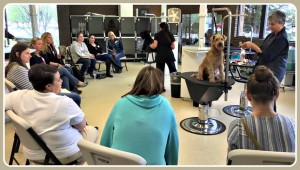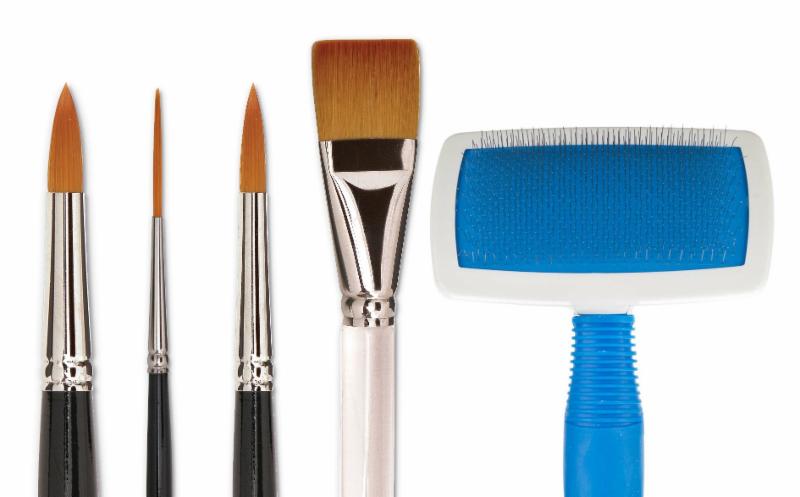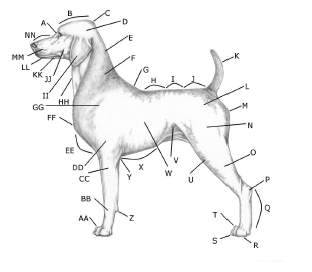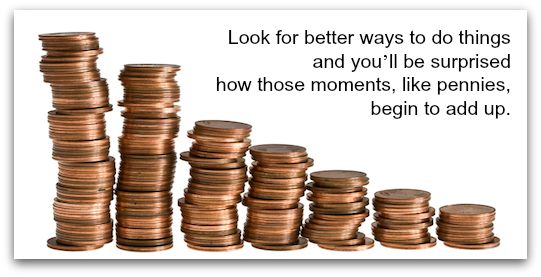(Welcome to my blog! This week, my marketing expert, Joelle Asmondy, will be filling in for me. Joelle is a whiz with marketing and is a firm believer in education. Enjoy!)
 I was at one of our industry’s amazing trade shows recently and had a brief but memorable exchange with a lady that walked past our booth. I wished her a good morning and without turning her head, she glanced at the table in front of me and the many books we had on display. Never breaking stride, she dismissed me with a quick,
I was at one of our industry’s amazing trade shows recently and had a brief but memorable exchange with a lady that walked past our booth. I wished her a good morning and without turning her head, she glanced at the table in front of me and the many books we had on display. Never breaking stride, she dismissed me with a quick,
“I’ve been in this business for 28 years – I’m good.”
“How wonderful that she has been in business that long!” I thought. “AND that she still comes to trade shows! She must really love the work she does!” I was so impressed that for a second I didn’t realize the subtext of our “conversation.”
“I don’t need to learn anything else.”
Wait – what?!
It was such a quick encounter, but I can’t stop thinking about it. I’ve replayed it over and over in my head. This morning I finally realized why this struck such a chord with me.
 When I was working my way through college, I worked for several months in a plastics assembly plant. The work wasn’t hard and I actually enjoyed working with my hands, but I could see the lifeless glaze in the eyes of my co-workers who had been at the job for years – and would probably never leave. They had done the same tasks at the same stations for years. There was no challenge in it for them anymore. They would fall into trance-like states while working. This was not the same look I got when I lost myself in a painting I was working on, when time fell away and I lost track of my surroundings until I came up for air. This was different. For them, everything was the same, with nothing to stimulate or relieve the mindless repetition until lunch time. There was no joy and no pride in what they were doing. It was just a job – something to be done for a paycheck.
When I was working my way through college, I worked for several months in a plastics assembly plant. The work wasn’t hard and I actually enjoyed working with my hands, but I could see the lifeless glaze in the eyes of my co-workers who had been at the job for years – and would probably never leave. They had done the same tasks at the same stations for years. There was no challenge in it for them anymore. They would fall into trance-like states while working. This was not the same look I got when I lost myself in a painting I was working on, when time fell away and I lost track of my surroundings until I came up for air. This was different. For them, everything was the same, with nothing to stimulate or relieve the mindless repetition until lunch time. There was no joy and no pride in what they were doing. It was just a job – something to be done for a paycheck.
Dog grooming, like anything else, has routines. It’s how we maintain consistency, quality, and safety. However, I just can’t imagine being satisfied with doing things the same way, every day, for the rest of my life. After all, technology changes. Breed standards evolve. Styles change. People certainly change. How can anyone in an industry as rich and diverse as ours possibly think that there is nothing more to learn, nothing to be gained by looking at something anew?
Anyone in sales or who works a trade show will tell you that you have to accept hearing, “no” more than you hear, “yes.” Was this person just telling me that she didn’t want to spend her money with us? Possibly. Maybe she had other priorities – shampoo, sharpening, new shears – that needed the cash in her wallet. I respect that. The difference is the deferral she gave. It wasn’t, “I already have that,” or “No thanks,” or even, “Leave me alone.” I have a very strong feeling that, had I offered the books for free, I would still have been met with, “I’m good.”
“I’ve been in this business for 28 years….”
I love it when people stop by to tell us how long they’ve been grooming – and that they still love learning new things. I love it because I know they’re happier in their lives. There’s something about trying new things and embracing change that stimulates us and makes us thrive, not just live. Think about the last time you experimented with a new technique. Maybe you tried Asian Fusion for the first time and your customer LOVED it? Maybe you learned a different scissoring method that saved time and effort which enabled you to groom another dog each day – or to go home a little earlier? Maybe you tried a new shampoo that reduced the amount of time you had to spend brushing a tangled pet and your arms weren’t so tired every night?
 Whatever it was, it happened because you were open to learning something new. Does that mean you HAVE to go out and buy our books? Of course not (although we wouldn’t mind!). Don’t automatically short-change yourself because you’ve been at it for years. There is always something new to be learned and so much more to life than just slogging through the days.
Whatever it was, it happened because you were open to learning something new. Does that mean you HAVE to go out and buy our books? Of course not (although we wouldn’t mind!). Don’t automatically short-change yourself because you’ve been at it for years. There is always something new to be learned and so much more to life than just slogging through the days.
Successful people know that learning is the key to their success. “If you settle back and decide that you’ve learnt everything you need to know about running a business, about succeeding in your career or about managing and motivating your team … you’ll lose out to competitors who have a passion for learning.”
So true.
It may not be easy or convenient to learn new things. It takes time to adapt to new things until the change feels natural – but isn’t it worth it? Best friends were strangers at first. Think of all the movies you might have missed, the books you’d never read, and the amazing food you’d never have experienced if you’d never tried anything new. I try new things every day and I can honestly say that because of it…
“I’m good.”
Make it a great week!
~ Joelle Asmondy






 If you ask people in our industry if they think grooming and styling pets is an art form or a skilled trade, most would say that it’s a little of both. I agree. When you watch members of GroomTeam USA at work, their efforts are definitely works of art. Skills like theirs take years to develop. Today, I want to talk about one aspect of that development: learning to see like an artist.
If you ask people in our industry if they think grooming and styling pets is an art form or a skilled trade, most would say that it’s a little of both. I agree. When you watch members of GroomTeam USA at work, their efforts are definitely works of art. Skills like theirs take years to develop. Today, I want to talk about one aspect of that development: learning to see like an artist. So I’m staring at the page… what am I looking at? What am I looking for? When I’m staring at that blank sheet of paper, I’m seeing what I will put there. As I stare into that whiteness, I’m watching the colors and lines take shape in my mind and align themselves on the page. It’s like my mind has produced a transparency of the finished product and has mentally created an overlay onto the page. All I have to do is put the marks on the paper. If I’m sculpting, I’m staring at the lump of rock and seeing the shape of what I want to create in the stone. All I have to do is remove all the stuff around it and let it out.
So I’m staring at the page… what am I looking at? What am I looking for? When I’m staring at that blank sheet of paper, I’m seeing what I will put there. As I stare into that whiteness, I’m watching the colors and lines take shape in my mind and align themselves on the page. It’s like my mind has produced a transparency of the finished product and has mentally created an overlay onto the page. All I have to do is put the marks on the paper. If I’m sculpting, I’m staring at the lump of rock and seeing the shape of what I want to create in the stone. All I have to do is remove all the stuff around it and let it out. Trim styles are all about anatomy. Groomers need to know their breed standards and to know them they need to understand anatomy. If you’re a visual learner, get out your reference material and study the images until you can see them on any dog that walks into your salon. If you’re a tactile student and learn by doing, get those books out and learn to find reference points on dogs through your sense of touch. Feel where the point of rump is, the point of shoulder, and the barrel of the chest. If you can’t see them, learn your anatomy reference points by touch. Then learn to do both. Developing your knowledge base creates reliable instincts and reflexes.
Trim styles are all about anatomy. Groomers need to know their breed standards and to know them they need to understand anatomy. If you’re a visual learner, get out your reference material and study the images until you can see them on any dog that walks into your salon. If you’re a tactile student and learn by doing, get those books out and learn to find reference points on dogs through your sense of touch. Feel where the point of rump is, the point of shoulder, and the barrel of the chest. If you can’t see them, learn your anatomy reference points by touch. Then learn to do both. Developing your knowledge base creates reliable instincts and reflexes.

 Let’s take a little poll:
Let’s take a little poll: “I’ve grown a lot by working here.”
“I’ve grown a lot by working here.”
 Have you ever thought about what mismanaged time is doing to you and those around you? Let’s start with your health. Are you eating right or just grazing on whatever you can find? Are you sleeping well or enough? Is your body reacting to the stress with pain, skin issues, or illness? What about your relationships with others? Are your irritable, impatient, and withdrawn? Are you missing out on family events? How much time do you get to spend with your friends? For that matter, when did you last take any time for yourself?
Have you ever thought about what mismanaged time is doing to you and those around you? Let’s start with your health. Are you eating right or just grazing on whatever you can find? Are you sleeping well or enough? Is your body reacting to the stress with pain, skin issues, or illness? What about your relationships with others? Are your irritable, impatient, and withdrawn? Are you missing out on family events? How much time do you get to spend with your friends? For that matter, when did you last take any time for yourself? Know when to ask for help
Know when to ask for help